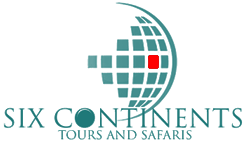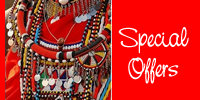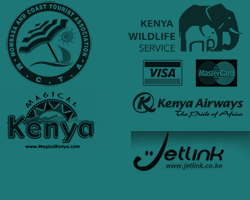-
Home -
About Us -
Our Safaris - Short Safaris
- Short Kenya Safaris
- 4 Days Safaris
- 5 Days Safaris
- Long Safaris
- 6 Days Safaris
- 7 Days Safaris
-
Short Excursions -
Special Safaris - Safaris with a Difference
- Conservation Safaris
- Missionary Safaris
- Volunteer Safaris
- Obama Heritage Safari
- Adventurous Experiences
- Mountain Climbing
- Trekking
- Golfers Safaris
- Cultural Safaris
-
Car Hire Services -
Special Offers -
Contact Us
7 Days Safaris
7 Days Mt.Kilimanjaro Climb/Trek --Marangu Route
Day 1.Nairobi-Arusha-Moshi
Depart Nairobi in the morning by Shuttle bus for Moshi arriving late afternoon. Dinner and overnight at a Moshi Hotel. {B,D}
Day 2.Mandara Hut (2744m).
Breakfast and drive about 45kms to Marangu Gate (1860m) trek through dense rain forest to Mandara Hut (9 hours). Dinner and overnight. {B,L,D}
Day 3.Horombo Hut
Depart in the morning for a trek up the Horombo Hut (10 hrs, 3761m), more rigid and rocky landscape but with nice views of Mawenzi and Kibo Peaks. Dinner and overnight. {B,L,D}
Day 4.Kibo Hut (4732m)
Proceed after breakfast through spectacular mountain vegetation to Kibo Hut (6 hours). Dinner and overnight.
{B,L,D}
Day 5. Uhuru Peak
This is the final attempt to the summit taken in the early hours of the morning (2:00am) taking you about 5hours to the most difficult steep part of the route to Gilman’s Point (5681m). From here you will take 1.5 hours to Uhuru Peak (5895m). Descend to horombo Hut for dinner and overnight. {B,L,D}
Day 6. Moshi-Arusha
Descend is easier and fast. Breakfast and trek to Marangu Gate. Transfer to Moshi for dinner and overnight{B,L,D}
Day 7. Nairobi
Depart by morning Shuttle back to Nairobi arriving at around 1830hrs. {B,L,D}
Price per person USD 1300
To inquire more info / Safari Quote / Book the Above Safari, Kindly complete our online Enquiry Form
Quick Links:
MT KILIMANJARO CLIMBING INFORMATION:
Climbing Kilimanjaro, Mt Kilimanjaro: 005.00 degrees south, 036 degrees east, 5895m a.s.l. Crowned by an eternal snowcap, Mt. Kilimanjaro is situated inside the Kilimanjaro National Park in Tanzania; it is the highest mountain in Africa and the tallest freestanding mountain on earth. This guide aims to provide the potential Kilimanjaro climber with valuable and accurate information on climbing Kilimanjaro, which will hopefully contribute towards increasing your chances of a successful summit attempt. Detailed itineraries, maps, useful links, stunning pictures and photography cover all the major routes, including the Marangu, Machame, Umbwe, Mweka (only for descending), Shira, Lemosho, Rongai (Nalemoru), and Arrow Glacier routes. To further assist you with your preparation on hiking or trekking to the summit of this breathtaking mountain, we have included essential information and tips on your mental and physical preparation, a fitness program, and a list of all equipment required. Other useful information provided.
Best months for trek Mt Kilimanjaro
The absolute best months for climbing are January, February, and September since they are the warmest months and almost clear of clouds. , though one could easily succeed throughout the year.
April and early May could get heavy rain or snow, but is good if you want a quiet clear mountain.
Also great are June through August (though colder), and November/December (could be wetter).
Through September and October it gets steadily warmer. October is particularly good if you want little or no rain, mild weather and few people on the mountain.
January through March are the warmest months, almost clear of clouds safe for a few brief rain showers, followed by the main rainy season during April & May. The temperatures will still be warm, but massive clouds will block visibility, while dropping snow on the summit and heavy rain on the lower slopes.
Equipment List
Headlamp
Walking pole(s)/
Sleeping Bag,
Gaiters: To keep mud, rocks, and snow out of your boots.
Water purification: This is essential as water for drinking is taken directly from mountain streams.
Hiking Boots: This is the most important item on the list. You'll need a comfortable/waterproof pair of hiking boots which offer plenty of support. Make sure they are broken in before you get to Kilimanjaro!
Other Check list (limit yourself)
1 set of thermal underwear (top & bottom)
1 sleeping bag (rating 0 C or four seasons)
1 warm jersey/sweater (wool)
1 sleeping pad/mat
1 pair of track suit top & bottom
1 light towel
1 polar fleece/down vest
1 pair of light loose fitting cotton trousers
1 waterproof jacket (with a hood) & pants
1 to 2 long sleeves shirts (cotton/wool)
4 pairs of thermal hiking socks
2 to 3 T-shirts/shirts
2 pairs of thermal socks liner
2 to 3 pairs of shorts (with pockets)
1 pair of hiking boots
1 wide brimmed hat / baseball cap
1 pair of sneakers/trainers/takkies
1 pair of warm heavy weight gloves/mittens
1 pair of gaiters
1 pair of light weight gloves (inner gloves)
1 bandana
1 pair of sunglasses/mountaineering glasses
1 balaclava
1 wool hat
1 warm scarf
NB: Make sure that your boots are waterproof
USEFUL EQUIPMENT:
2 x 2 litres water bottles (camel bags preferably)
1 head lamp (plus spare batteries & bulb)
1 pair of walking/ski poles
1 pocket swiss army knife
2 - 3 packets of moist towelettes.
1 travel pillow (optional)
Personal Items & Toiletries:
US $ Travelers cheques, toothpaste & tooth brush, body lotion, toilet paper and other personal hygiene items. (Ladies, please carry some sanitary toiletries as being at high altitude may alter your cycle).
Photographic (optional):
1 camera (plus spare batteries),film & tripod stand,different lenses,
1 pair of binoculars,video camera,video tapes, battery packs.
Miscellaneous (Optional):
notebook, pencil, sketchbook, masking tape, zip loc plastic bags, ear plugs, address list for post cards, map of Kilimanjaro (the trip leader will have one).
HEALTH:
Yellow Fever: This is compulsory and a certificate might be requested on arrival at the airport. Please make sure that you have the shot in time.
Malaria: There are various types of medicine on the market today used for prevention and treatment of malaria. We recommend that you consult your doctor on which prophylactics to take.
Water purification tablets: On the mountain, we use water from the streams. Although drinking water will be boiled first, it is advisable to add a tablet or two - to be on the safe side.
Acute Mountain Sickness (AMS): This is a condition commonly experienced at high altitude. In most cases, this can be avoided by following guidelines on hiking pace, eating, resting and fluid intake. We recommend that you familiarize yourself with the various affects that altitude can cause.
(Please consult your doctor on use of Diamox - tablets used by some mountaineers to help them cope with the effects of altitude).
Personal medical supplies (optional): As your tour leaders, we will carry a group medical kit.
Some items that you might want to carry would include; aspirin, imodium, laxatives, antibiotics, bandages, malaria tablets, gauze, adhesives, betadine, throat lozenges, eye drops, sun block, lip balm, moleskin antihistamine tablets and cream







